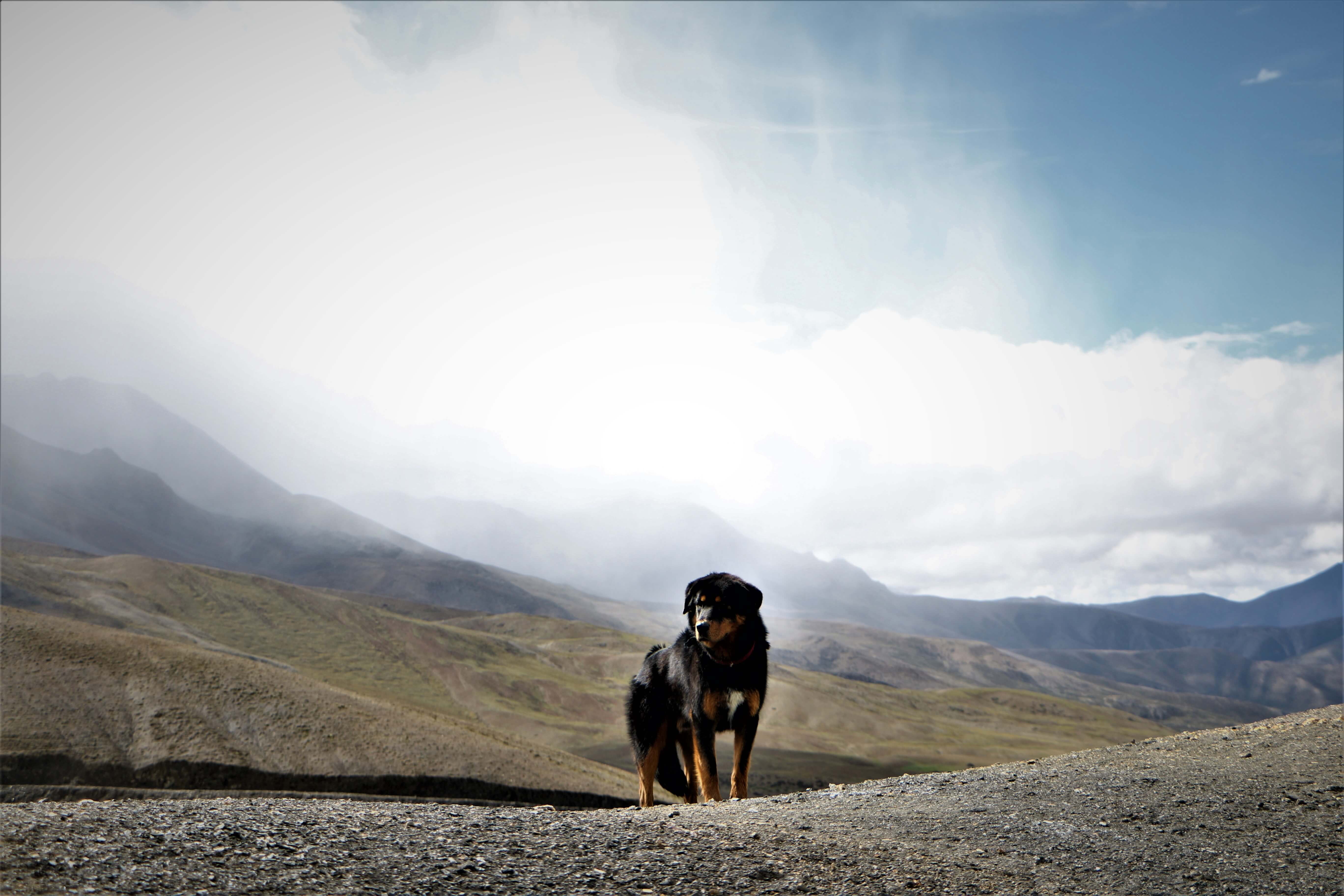A dog with altitude

The large shaggy dog with a great mane, thoughtful droopy eyes and a deep bark that echoes across Himalayan crags is not just a breed much sought after to guard livestock. The Tibetan Mastiff, scientists say, is one of the first species to be domesticated, evolving from wolves to live alongside human beings.
Found in Himalayan settlements in Nepal and the Tibetan Plateau right up to the upper limits of human habitation at 4,500m, the dog’s body is so adapted to low oxygen levels in the thin air that its blood is 50% more efficient at carrying oxygen than that of mutts living in the plains.
Read also:
Khumbu's wild dogs, Navin Singh KhadkaTashi's trek, Neil Dixit
Latest genetic studies have shown that domestic dogs emerged from two types of wolves found in the eastern and western edges of Eurasia 15,000 years ago. Analysis of the mitochondrial DNA of early dogs shows that the eastern branch of canines on the Tibetan Plateau may have been the first dogs to be domesticated by early humans.
The modern dog that most resembles early canines after they split from wolves, researchers say, is the Tibetan Mastiff. The German Shepherd could be the descendant of early dogs that evolved in Europe, while Huskies are said to be a mixture of both.
Just like the physiology of Nepal’s ethnic groups and Tibetans who live at high altitude has adapted to living in the cold, thin air, the Tibetan Mastiff has also evolved for high altitude — with its lower oxygen concentration — and became a professional guard dog some 3,000 years ago in the Himalaya.
Read also:
Saving Nepal's last wild dogs, Yadav Ghimirey

Scientists have now found why mastiffs, which can weigh up to 170kg, are so hardy: they carried over more gray wolf DNA in their genes than their lowland comrades. This could be because the mastiff interbred back with the Himalayan gray wolf, picking up mutations that gave its blood a greater ability to transport oxygen.
Pasang Sherpa, 85, from Salleri, remembers accompanying his father on trips to India to sell Tibetan Mastiff puppies. They bartered the dogs for food, clothes and basic items, walking up to three weeks to the Indian border. The puppies were in high demand in India as guard dogs because of the mastiff’s reputation for fierceness, but most died from the heat in the plains.

“They used to be loyal and vigilant, guarding our sheep, goats and yaks from wolves and leopards,” recalls Sherpa, lamenting that there are very few mastiffs left in Khumbu as the number of nomadic shepherds has declined.
Read also:
Creatures of cultureIn an animal farm, EditorialIn Dolpo’s Shey Gomba a chained Tibetan Mastiff guards the monastery, barking fiercely at intruders when it is not sleeping. Tibetan Mastiff puppies today can fetch as much as Rs300,000, although half-breeds go for less.
In 2011, Nepali Times carried the story of a Tibetan Mastiff named Tashi, which walked 200km from a village in Ramechhap, its adopted home, back to Kathmandu to find his canine friends and Japanese owner in a Patan neighbourhood.
Former Peace Corps volunteer in Nepal, Don Messerschmidt, has been studying Tibetan Mastiffs since the 1980s and authored Big Dogs of Tibet and the Himalayas: A Personal Journey. He has nothing but admiration for these noble dogs.
He wrote this tribute in 1983 in the journal Rangelands: ‘Against the predatory denizens of the range, and as a faithful and intelligent companion, the Tibetan Mastiff has few if any peers. Vigilance is the quality of alert watchfulness against danger.

The primary role and natural instinct of these dogs is to protect the pastures, animals and compounds of their master… they uphold their responsibilities of protection with a faithfulness and a reserved, dutiful attachment and native intelligence that reflect the well-earned fame of the breed.’




